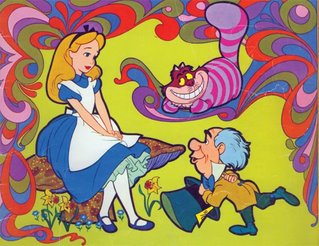
One of the greatest USPs a nation can have is its heritage. Heritage is something that intrinsically belongs to that nation and these heritage aspects are not offered by any other nation. As part of the heritage of both China and India, we have China’s traditional herbal medicine & healthcare and in India we have our own centuries old systems of herbalism, ayurveda, siddha and unani. One can bank on such heritage aspects as business drivers.
In India, the state of Kerala, positioned as God’s own country, banks on its unique traditions, art, culture and ecological aspects as the drivers of its tourism industry. Thus heritage aspects and marketing of one’s heritage can contribute to the economic growth of a nation or state.
Recently there was a dramatic development in the Asian political scene. It is all thanks to the impact of globalization, better communication and forced, persuaded and/or inevitable shedding of insular positions of countries. We had the historic visit of Mr. Hu Jintao Premier of China to India. During the meeting between the PM of India Mr. Manmohan Singh and Mr. Hu, India and China have pledged after a landmark summit to work faster to end a bitter border dispute, the cause of a brief war in 1962, and double trade between the Asian giants to 40 billion dollars by 2010. In fact, 1/3rd of world’s humanity is in China and India. This Indo China bloc is a big market and these two countries have huge potential to supply quality human resource to the world, besides products and services.
In the distant past shrouded by the mists of time Buddhist monks traveled between China and India. These monks and pilgrims traveling to and fro are said to have carried seeds and seedlings of herbs in their hollow supportive bamboo walking sticks. Thus an herbal culture and heritage has been shared between the China and India for centuries.
The WHO too has noted the herbal heritage and traditional medicine in various countries.
Some important observations in the WHO website include:
• In China, traditional herbal preparations account for 30%-50% of the total medicinal consumption.
• In Ghana, Mali, Nigeria and Zambia, the first line of treatment for 60% of children with high fever resulting from malaria is the use of herbal medicines at home.
• In Europe, North America and other industrialized regions, over 50% of the population have used complementary or alternative medicine at least once.
• In San Francisco, London and South Africa, 75% of people living with HIV/AIDS use TM/CAM.
• 70% of the population in Canada have used complementary medicine at least once.
• In Germany, 90% of the population have used a natural remedy at some point in their life. Between 1995 and 2000, the number of doctors who had undergone special training in natural remedy medicine had almost doubled to 10 800.
• In the United States, 158 million of the adult population use complementary medicines and according to the USA Commission for Alternative and Complementary medicines, US $17 billion was spent on traditional remedies in 2000.
• In the United Kingdom, annual expenditure on alternative medicine is US$ 230 million.
• The global market for herbal medicines currently stands at over US $ 60 billion annually and is growing steadily.
• 25% of modern medicines are made from plants first used traditionally.
On its part, the Kerala state Govt in India has recognized the global herbal trend and reiterated its commitment to participate in this movement and reap the economic benefits too. It is said the global market for herbal drugs is estimated to increase to a total $ 300 billion over the next three years and rise to $five trillion by 2050. With over 45,000 species of medicinal herbs spread over three environmental hotspots in the Western Ghats, Eastern Himalayas and the Andaman and Nicobar islands, India is termed the world herbal garden.
Herbal based businesses including the nutraceutical industry or dietary supplement businesses do not hold the world’s prime stage in terms of commerce and scientific enquiry in commercial R & D centres or corporate sponsored projects. The simple reason for this is that many herbals cannot be patented. (Some years back in a highly publicized case some wise guys in USA tried to patent turmeric and neem too.). Globally most dietary supplements have their origin in Ayurveda or other herbal systems of India and Chinese traditional medicine. Some of the top herbal dietary substances include turmeric, ginger, ashwagandha (Indian ginseng), Chinese ginseng, capsicum oleo resin, Phyllanthus niruri, Andrographis paniculata, Piper nigrum and longum, amla, Azadirachta indica, Picrorhiza kurroa, Eclipta alba, Triphala, Beorhaavia diffusa, Berberis aristata, Safed musli, Carum carvi, Alpinia galanga; Silymarin and Saw palmetto are notable Western herbal contributions. The Vinca alkaloids & taxol are important herbal inspired anti cancer agents.
In this backdrop of the inherent strengths of Indian and Chinese traditional herbal systems and the global herbal opportunity; the Indian and Chinese Govts ought to sit across the table and formulate a common agenda to globalize herbal products through innovative value addition and presentation, production with state of the art machinery and systems, distribution through global channels (including the MLM or multi level marketing format), retailing based on influential scientific communication and scientific marketing communication exercises to enhance demand and consumption.
In such a Govt initiated endeavour, public private participation is a must. Tapping citizens to voice their ideas for this Indo China herbal agenda will help. Beyond this, bringing in powerful consulting companies like Ernst and Young, Delloite consulting etc that play a vital role in globalizing such endeavours by bringing powerful parties to the table and working on the nutraceutical agenda will help the herbal business cause of India and China. A big business opportunity for mass consumption of herbal ingredients originating from India and China is their use in products like soaps (Eg. the ubiquitous presence of aloe vera in many soaps and cosmetics). In fact, worldwide marketing of chyawanprash has immense potential. For this the stake holders and companies need to create a global marketing communication platform and initiatives (say a GLOBAL CHYAWANPRASH INITIATIVE) to inform, inspire and enhance information and consumption of chywanprash worldwide. This will have a great influence on production patterns of the important herbal ingredients among farmers in India. Bankers like ICICI too are vital agencies who can help finance and catalyze initiatives in furthering the India China global herbal business agenda.
Herbal business is a multi billion dollar global opportunity. Further more, giant pharma companies are looking for patent related monopolistic allopathic businesses. Herbal products are not patentable, hence unattractive to big pharma companies. And to grab a market share in the global healthcare biz the primary requirement is a keen marketing sense & market building initiatives for herbal products worldwide, after all business is marketing and advertising (!). Evidence based marketing communication is a must here. Important value wise (herbal) product markets include USA, Japan & Germany.
So here is hoping for valuable inputs from the readers to develop an Indo China herbal agenda.



